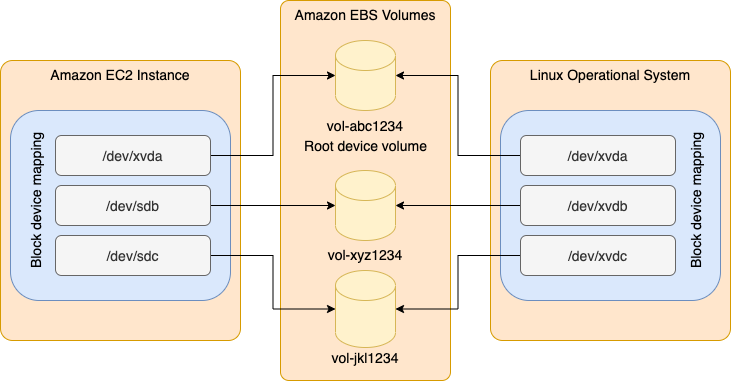AWS Compute Blog
Creating computing quotas on AWS Outposts rack with EC2 Capacity Reservations sharing
This post is written by Yi-Kang Wang, Senior Hybrid Specialist SA. AWS Outposts rack is a fully managed service that delivers the same AWS infrastructure, AWS services, APIs, and tools to virtually any on-premises datacenter or co-location space for a truly consistent hybrid experience. AWS Outposts rack is ideal for workloads that require low latency […]
Capturing client events using Amazon API Gateway and Amazon EventBridge
This post shows how to send client events to an API and EventBridge to enable new customer experiences. The example covers enabling new experiences by creating a way for software clients to send events with minimal custom code.
How to mount Linux volume and keep mount point consistency
This post is written by: Leonardo Azize Martins, Cloud Infrastructure Architect, Professional Services Customers often use Amazon Elastic Compute Cloud (Amazon EC2) Linux based instances with many Amazon Elastic Block Store (Amazon EBS) volumes attached. In this case, device name can vary depending on some facts, such as virtualization type, instance type, or operating system. […]
Expanding Your EC2 Possibilities By Utilizing the CPU Launch Options
This post is written by: Matthew Brunton, Senior Solutions Architect – WWPS To ensure our customers have the appropriate machines available for their workloads, AWS offers a wide range of hardware options that include hundreds of types of instances that help customers achieve the best price performance for their workloads. In some specialized circumstances, our […]
Mocking service integrations with AWS Step Functions Local
This post is written by Sam Dengler, Principal Specialist Solutions Architect, and Dhiraj Mahapatro, Senior Specialist Solutions Architect. AWS Step Functions now supports over 200 AWS Service integrations via AWS SDK Integration. Developers want to build and test control flow logic for workflows using branching logic, error handling, and retries. This allows for precise workflow execution with deterministic […]
Using the circuit breaker pattern with AWS Step Functions and Amazon DynamoDB
This post is written by Anitha Deenadayalan, Developer Specialist SA, DevAx Modern applications use microservices as an architectural and organizational approach to software development, where the application comprises small independent services that communicate over well-defined APIs. When multiple microservices collaborate to handle requests, one or more services may become unavailable or exhibit a high latency. […]
Migrating AWS Lambda functions to Arm-based AWS Graviton2 processors
AWS Lambda now allows you to configure new and existing functions to run on Arm-based AWS Graviton2 processors in addition to x86-based functions. Using this processor architecture option allows you to get up to 34% better price performance. This blog post highlights some considerations when moving from x86 to arm64 as the migration process is […]
Introducing AWS Lambda batching controls for message broker services
This post is written by Mithun Mallick, Senior Specialist Solutions Architect. AWS Lambda now supports configuring a maximum batch window for instance-based message broker services to fine tune when Lambda invocations occur. This feature gives you an additional control on batching behavior when processing data. It applies to Amazon Managed Streaming for Apache Kafka (Amazon […]
AWS Compute Optimizer supports AWS Graviton migration guidance
This post is written by Letian Feng, Principal Product Manager for AWS Compute Optimizer, and Steve Cole, Senior EC2 Spot Specialist Solutions Architect. Today, AWS Compute Optimizer is launching a new capability that makes it easier for you to optimize your EC2 instances by leveraging multiple CPU architectures, including x86-based and AWS Graviton-based instances. Compute […]
Efficiently Scaling kOps clusters with Amazon EC2 Spot Instances
This post is written by Carlos Manzanedo Rueda, WW SA Leader for EC2 Spot, and Brandon Wagner, Senior Software Development Engineer for EC2. This post focuses on how you can leverage recently released tools to optimize your usage of Amazon EC2 Spot Instances on Kubernetes Operations (kOps) clusters. Spot Instances let you utilize unused capacity […]









